Find out when and how to use earplugs when flying to reduce ear discomfort and block out excess noise.
Picture this – you’re settled on your plane seat and excited about your upcoming trip. The plane takes off, and the next thing you know, there is a popping sound, and you cannot hear anything.
This gets worse as your plane climbs higher in the sky. Now, you’re experiencing excruciating pain that won’t go away. What’s worse, the people around you seem okay, but then you notice that some of them are wearing earplugs. Is there anything you’re missing? Do earplugs help when flying?
Well, we’re here to answer your questions. In this article, we’ll discuss if earplugs can reduce ear pain and discomfort when flying. We’ll also cover common safety concerns regarding earplugs and what to do about them. Sounds like what you need? Read on to find out more!
Do Earplugs Help When Flying?
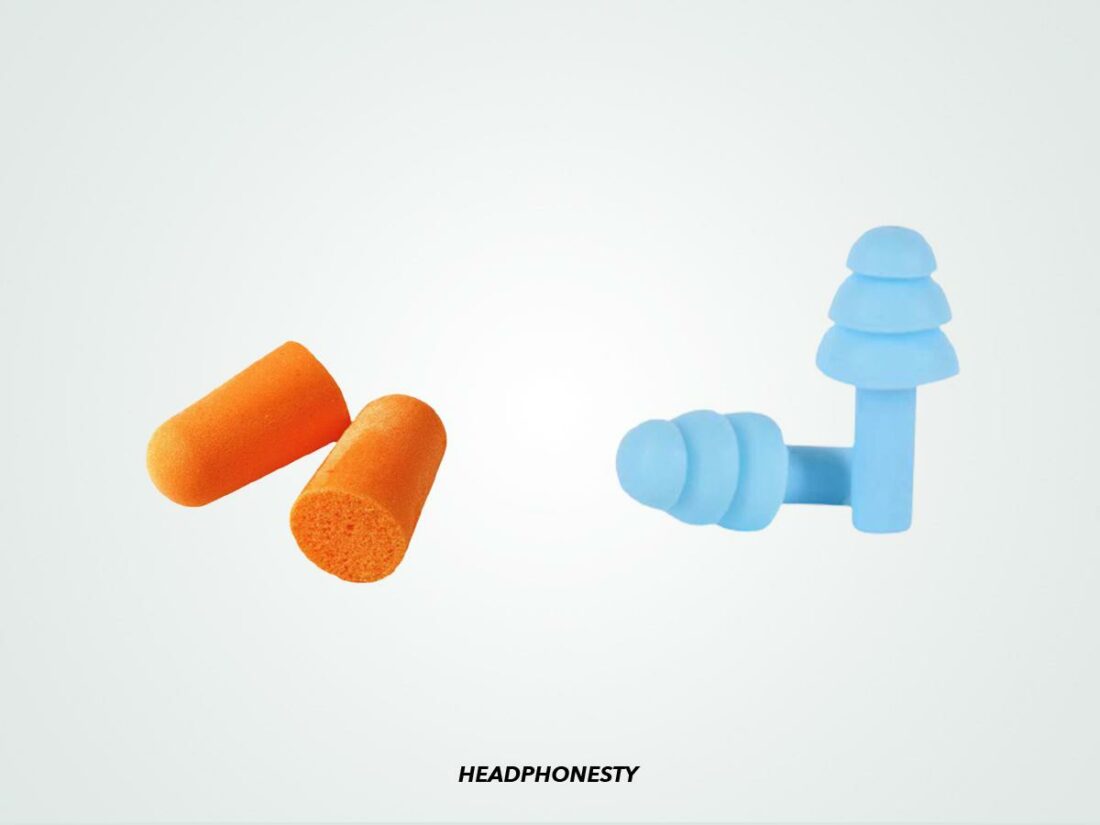
Yes, earplugs can help when flying. In particular, earplugs aid in two main issues you might encounter during flights: experiencing ear pain and being exposed to uncomfortable noises.
But to better understand how earplugs help with these concerns, it’s important to explain why these problems happen in the first place.
Airplane ear is an acute condition characterized by ear pain and muffled hearing, commonly occurring when there is a change in pressure. The rapidly shifting air pressure causes an imbalance between environmental pressure and the pressure in your middle or inner ear, thus exerting stress on your eardrums and causing pain.
Earplugs help in slowing down the change in pressure in the inner ear, thus giving your ears time to adjust to the shift in pressure. This makes you feel less uncomfortable when flying, particularly when used with other equalizing techniques like yawning or blowing your nose.
A noisy plane environment is another issue you may face when flying. For example, you may find yourself getting annoyed with the constant whirring of the plane engine. Or, if you’re seated in a busy part of the plane, you may also have difficulty relaxing. In these situations, earplugs help by reducing unwanted background noise.
When should you wear earplugs on a plane?
Although earplugs can be helpful, wearing them all the time can be tiring. Air pressure doesn’t fluctuate much when you’re in the air, either, so there’s no need to wear them throughout your trip.
So, when is the best time to wear your earplugs?
If you’re trying to avoid airplane ear, you should wear them during takeoff and landing because this is when the outside air pressure fluctuates the most. But, if you simply want some peace and quiet, then you can try wearing earplugs only in noisy areas of the plane.
Let’s discuss this in more detail:
- During take-off
The plane’s rapid rise in altitude causes the air pressure inside the inner ear to increase, making it much greater than the air pressure outside. As a result, this causes swelling of the eardrum, leading to ear pain. Earplugs regulate this change in pressure to reduce your discomfort and give you time to equalize your ears.
- During landing
During the plane’s descent, the air pressure outside becomes greater than the pressure inside the inner ear. This phenomenon sucks the eardrum in and flattens the Eustachian tube, causing pain. Like in takeoff, wearing earplugs aids in regulating this abrupt change in pressure, giving you time to bring air into the inner ear to regain the pressure balance.
- When sitting in noisy areas of the plane
Some sections of the plane are noisier than others. You might get distracted by the engine’s buzzing sound if you’re seated towards the back. Sitting near the bathroom also exposes you to ambient noise, such as flushing sounds and people coming and going.If you’re in these parts of the plane, wearing earplugs can minimize the noises you hear. They’re helpful, especially on long-haul flights when you want time to sleep or rest.
Which Earplugs Should You Use When Flying?
Since various earplugs differ in their build and functionality, you might wonder which types are most suitable for flying. Here’s a quick rundown of the best earplugs to use on your next flight:
Foam earplugs
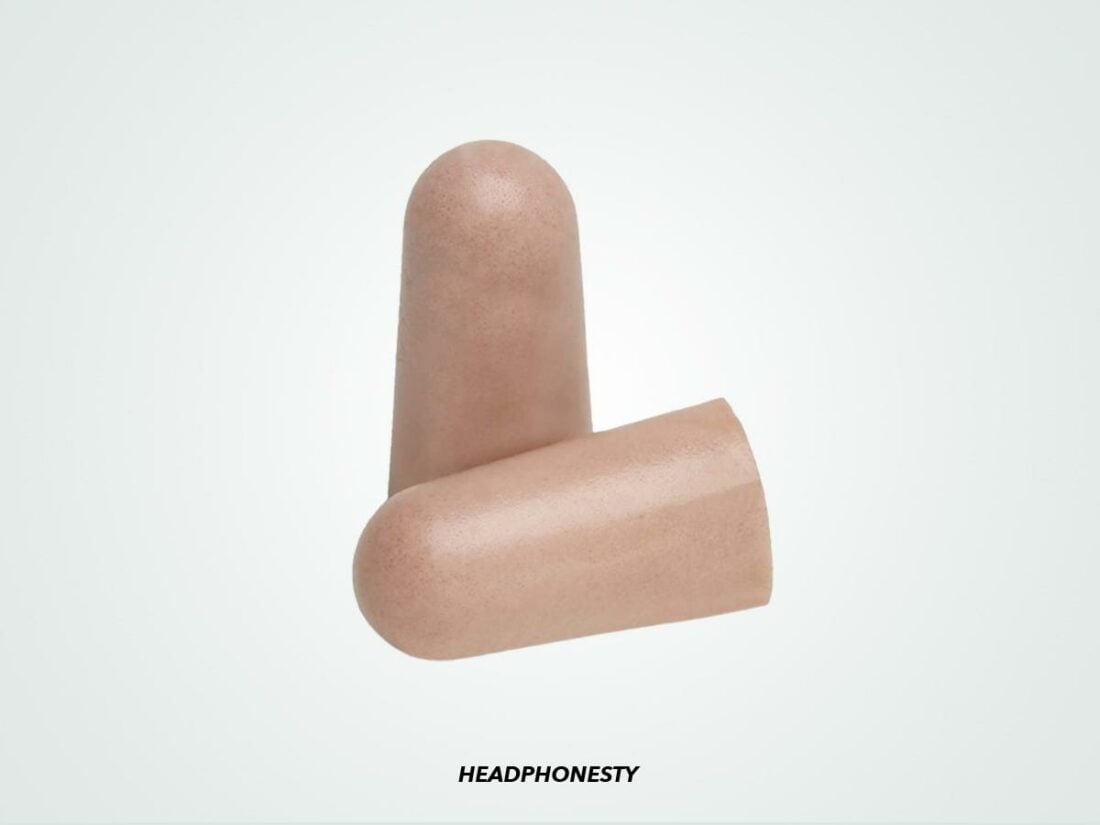
Foam earplugs are made from a soft, formable material (usually foam) that conforms to the shape of your ear canal. They are inserted directly into the ear canal, where they expand to seal the area, thus muffling sound. When flying, these earplugs are best worn to reduce background noise.
Simply roll the earplugs into a thin cylinder that will fit about halfway through the ear canal. Once inside, release the earplugs to allow them to expand.
Here are our top recommended foam earplugs:
Filtered earplugs
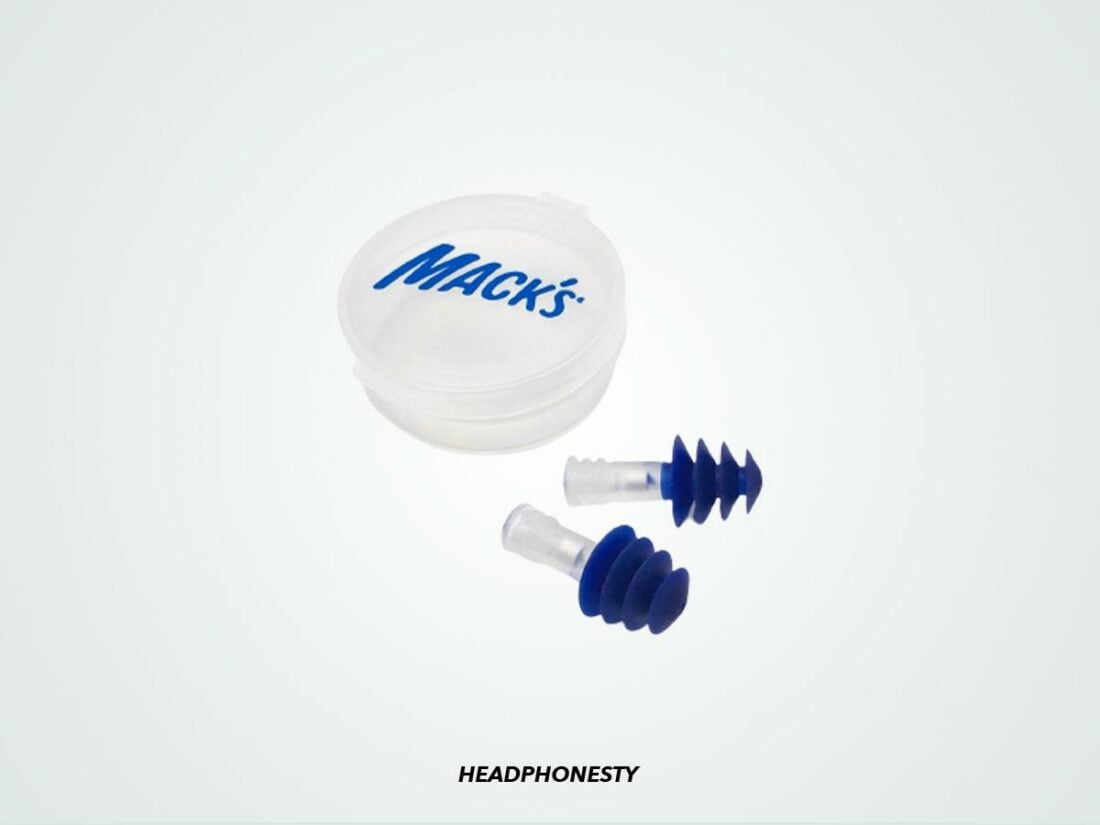
Filtered earplugs are explicitly made to ease the change in pressure during flights. These silicone earplugs contain small filters or valves inside them, slowing down the air pressure shift. The result? Less stress on the eardrums, and thus, less pain and discomfort.
Depending on the brand, filtered earplugs are recommended to be worn around a few minutes before takeoff and around 45 minutes to an hour before landing. At cruising altitude, these can be removed and stowed carefully for later use.
If you’re looking for your next pair of filtered earplugs, check out these options:
- Alpine FlyFit Earplugs
- Mack’s Flightguard Airplane Pressure Relief Earplugs
- Softvox Airplane Earplugs
Pre-molded earplugs
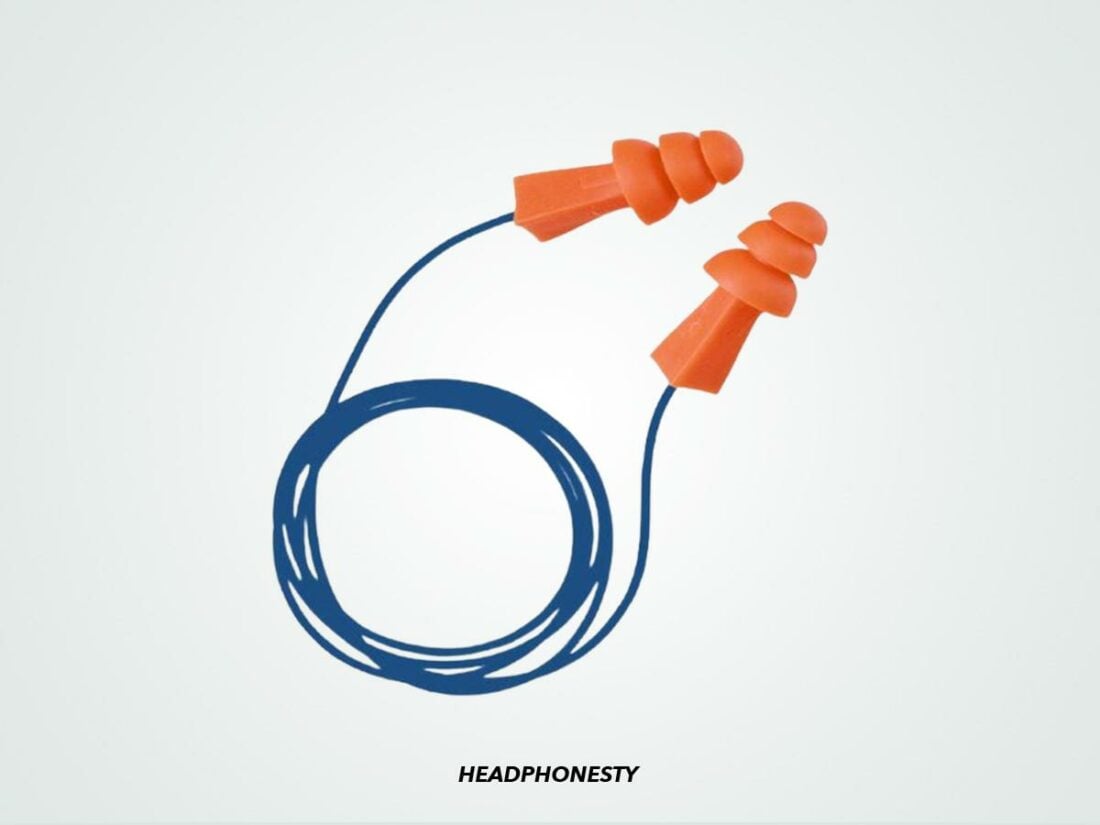
Pre-molded earplugs are usually made from silicone and rubber, making them more reusable than foam earplugs. These earplugs also come in different sizes, which can fit the ear canal better than other earplugs.
Like foam earplugs, pre-molded earplugs mainly function to block ambient noise. These earplugs have a pre-formed shape, making it easier to put them inside the ears in the same manner as foam earplugs. After use, these can be washed and stored for later use, unlike disposable foam earplugs.
We highly recommend the Tasco 9010 Tri-Grip Pre-Molded Earplugs if you need help figuring out where to start.
Is It Safe to Wear Earplugs on a Plane?
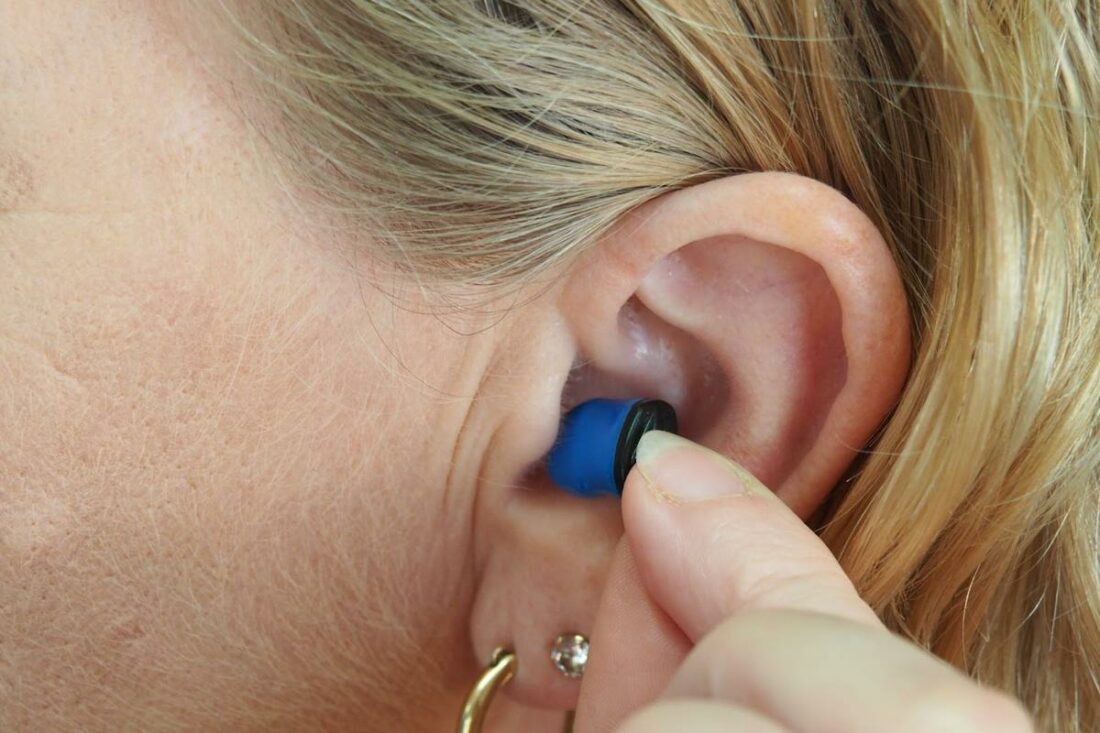
As you can see, earplugs are an excellent addition to your travel kit. However, this doesn’t mean that they don’t come with risks.
Although earplugs are generally safe, their improper use can lead to other problems. Here are some things to watch out for:
Ear infections
Because you insert earplugs inside the ear canal, they pose a higher risk of ear infections if you don’t take enough precautions.
For example, it might be tempting to reuse disposable foam earplugs if you only wore them for a short while during the flight. However, this practice has the potential to introduce dirt or bacteria into the ears, leading to infection. Therefore, regardless of the flight’s duration, it’s still best to discard earplugs after each use.
Additionally, since you can’t wash your hands inside the plane before takeoff, you might be tempted to put earplugs in your ears without sanitizing your hands. And doing this can also put you at risk of infection. Instead, using a hand sanitizer before touching your earplugs can help protect your ears.
Muffled hearing
Earplugs are great for noisy plane rides because they block out ambient noise. However, doing so may only be beneficial in some cases. For instance, you might miss out on critical announcements in emergencies. If you’re a solo traveler wearing earplugs while sleeping, you may also be an easy target for petty theft.
So, during flights, remember to wear earplugs that will allow you to hear enough of what’s happening in your environment.
Loss of hearing
Earplugs are supposed to protect your hearing, not cause hearing loss. However, earplugs that come into contact with your eardrums can cause permanent damage to your hearing. This will only occur if you lodge the earplugs too deep into your ear canal when wearing them, perhaps in an attempt to block out more noise.
Conclusion
Earplugs are a great help when traveling by plane, be it for equalizing the change in air pressure or simply blocking out ambient noise. They’re also a safe option, especially when you know their potential risks.
So, if you were initially wondering whether or not you could bring earplugs along for your next plane ride, we hope we’ve helped ease your worries! As you can see, earplugs have so much to offer, and it’s easy to address the safety issues they pose, too.
What do you think of this article? Did it cover everything you wanted to know regarding wearing earplugs on the plane? Think we missed a question you want to be answered? Let us know in the comments!
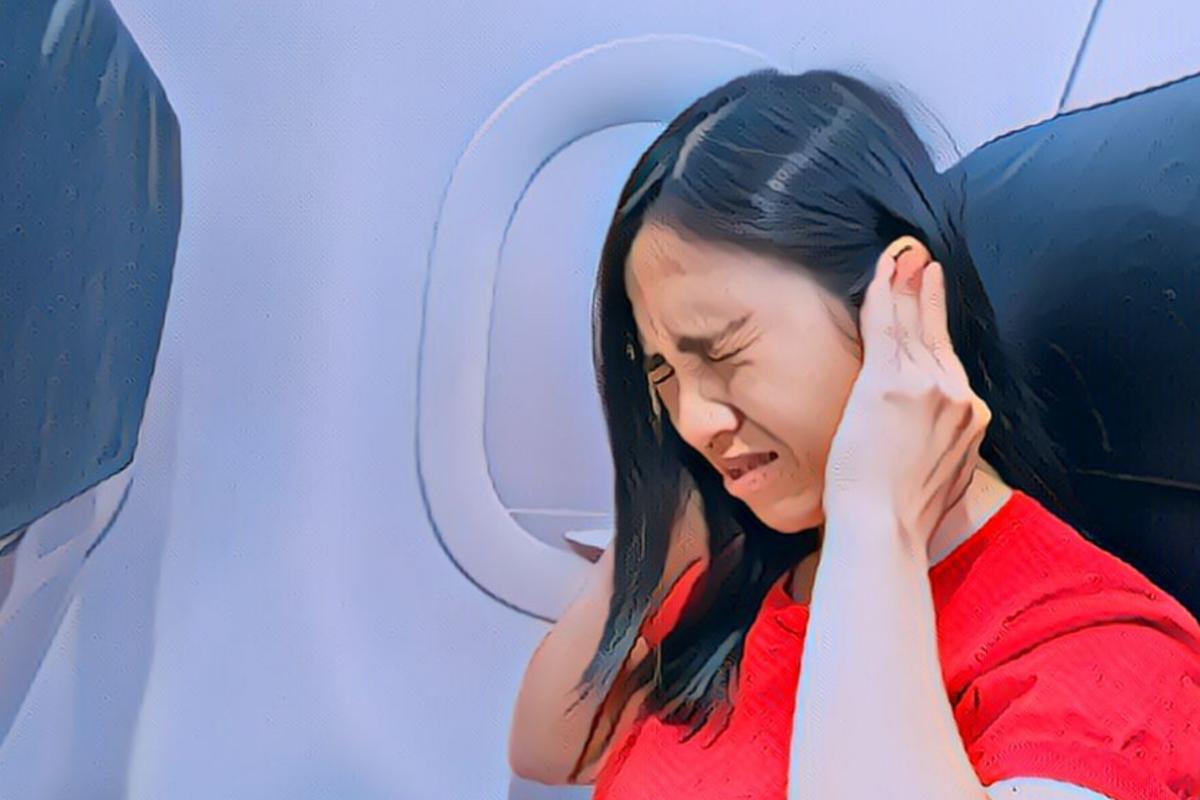
This article has been very helpful on making a decision on whether to try earplugs on a flight. I suffer extreme pain on landing. I am flying for work soon so hopefully the earplugs work for me.
Thank you.
Did it work?
I’ll try the suggestions here. Just wonder if Flonase would help. My ear pain was unbearable for two days as stated. Thanks